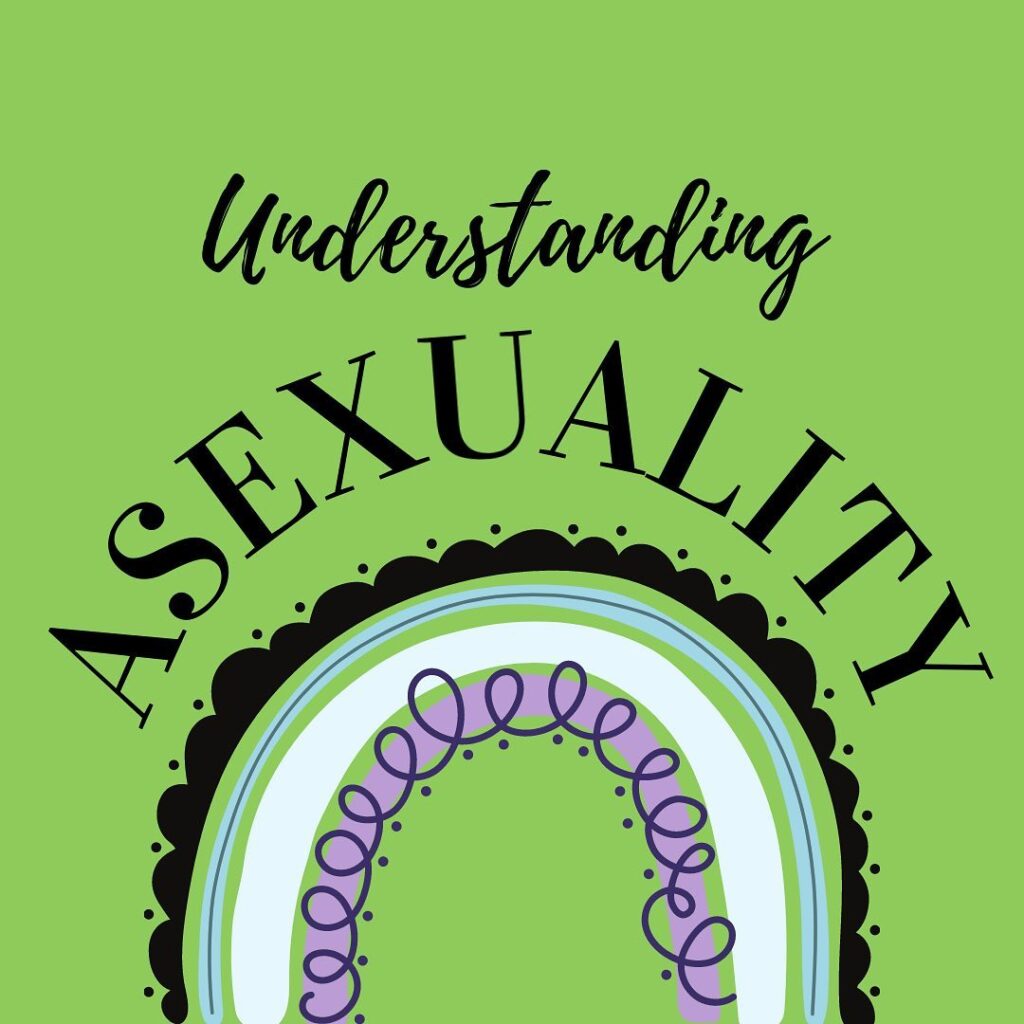In today’s diverse society, it is important to broaden our understanding of different types of relationships. One such relationship is the asexual relationship. In this article, we will explore the concept of asexual relationships, delve into the intricacies of asexuality, discuss the unique challenges faced by individuals in asexual relationships, and provide valuable insights for nurturing intimacy in these relationships.
Contents
Understanding Asexuality

To comprehend asexual relationships, we must first understand asexuality itself. Asexuality refers to a sexual orientation where individuals experience little or no sexual attraction. It is essential to differentiate asexuality from celibacy, as celibacy is a choice to abstain from sexual activity, whereas asexuality is an innate orientation. Asexual individuals may still experience romantic, emotional, and aesthetic attractions.
Asexual relationships are characterized by a lack of sexual intimacy, but this does not diminish their depth and significance. Emotional connections, trust, and companionship form the foundation of these relationships. Partners in asexual relationships prioritize emotional and intellectual compatibility, often sharing activities and experiences that strengthen their bond. It is important to note that not all asexual individuals are in asexual relationships, as they may choose to pursue other relationship dynamics.
Different Aspects of Asexual Relationships
Asexual relationships refer to romantic or intimate relationships where one or both partners identify as asexual. Asexual individuals do not experience sexual attraction or have a low interest in sexual activities. However, asexual relationships can be just as fulfilling and meaningful as any other type of relationship. Here are some different aspects of asexual relationships to consider:
- Emotional intimacy: Asexual relationships often prioritize emotional intimacy. Partners may focus on deep emotional connections, trust, and understanding of each other’s feelings and thoughts. Emotional intimacy can be the foundation of a strong and lasting relationship.
- Communication: Open and honest communication is essential in any relationship, and it’s particularly important in asexual relationships. Since sexual attraction and desires might be different or absent, discussing feelings, boundaries, and expectations becomes crucial to maintaining a healthy connection.
- Intimacy beyond sex: Asexual relationships demonstrate that intimacy is not solely dependent on sexual activities. Partners can express affection through various means, such as cuddling, holding hands, hugging, kissing, and spending quality time together.
- Understanding boundaries: Asexual individuals may have specific boundaries regarding physical intimacy, and their partners must respect and acknowledge those boundaries. Consent and mutual agreement play a significant role in asexual relationships.
- Relationship dynamics: Each asexual relationship is unique, and partners may have different needs and desires. Some asexual individuals may be comfortable with a sexual partner, while others might prefer a relationship with another asexual person. Navigating these dynamics requires patience, empathy, and compromise.
Challenges in Asexual Relationships

Asexual relationships, like any other type of relationship, can face specific challenges due to the unique nature of asexuality and its impact on intimacy and connection. Some of the challenges that individuals in asexual relationships might encounter include:
- Sexual mismatch: One of the most apparent challenges is the potential for a sexual mismatch between partners. If one partner experiences sexual attraction and desires while the other is asexual, finding a balance that meets both partners’ needs can be difficult. This difference in sexual orientation may lead to feelings of frustration, inadequacy, or unmet expectations.
- Communication barriers: Discussing asexuality and sexual preferences openly and honestly can be challenging. Misunderstandings and assumptions about each other’s desires may arise if there is a lack of effective communication. Partners may need to work on fostering open dialogues to address any concerns and find ways to maintain intimacy and connection.
- External pressure and societal norms: Society often places a significant emphasis on sexual relationships and may question or invalidate asexual individuals and relationships. External pressure from friends, family, or society at large to conform to traditional sexual norms can create stress and strain within the relationship.
- Acceptance and self-identity: Asexual individuals may struggle with self-acceptance and understanding their own identity. Accepting one’s asexuality and being comfortable with it is crucial for a healthy relationship. Similarly, partners who are not asexual may need time to understand and accept their partner’s orientation fully.
- Negotiating intimacy: Asexual relationships may require creative ways to express intimacy beyond sexual activities. Finding shared ways to bond, feel close, and show affection is essential in these relationships, but it may require effort and exploration.
- Misunderstandings and misconceptions: Asexuality is often misunderstood or misinterpreted, both within and outside the LGBTQ+ community. These misconceptions can lead to judgment, confusion, or invalidation of the relationship and the individuals involved.
- Finding compatible partners: Asexual individuals may face challenges in finding compatible partners who understand and respect their orientation. This can lead to feelings of isolation and loneliness if they struggle to connect with potential partners who align with their values and preferences.
Navigating intimacy in any relationship can be a complex and evolving process. Intimacy goes beyond physical affection and includes emotional, intellectual, and spiritual closeness. Here are some tips to help navigate intimacy in a relationship:
- Open communication: Effective communication is the cornerstone of navigating intimacy. Discuss your feelings, desires, and boundaries openly with your partner. Be honest about your needs and listen actively to what your partner shares.
- Understand each other’s love languages: People have different ways of expressing and receiving love. Understanding your partner’s love language can help you connect on a deeper level and ensure your affection is communicated effectively.
- Build emotional intimacy: Emotional intimacy is about sharing your thoughts, fears, dreams, and vulnerabilities. Create a safe space for open and non-judgmental communication. Be supportive and empathetic when your partner shares their emotions.
- Explore physical affection: Physical intimacy doesn’t have to be solely about sexual activities. Explore different forms of physical affection that both partners are comfortable with, such as cuddling, hugging, holding hands, or giving massages.
- Be patient and respectful: Intimacy can take time to develop, especially if one or both partners have past experiences that make them hesitant or cautious. Be patient with each other and respect each other’s boundaries.
Strengthening Asexual Relationships

Strengthening asexual relationships requires a focus on building emotional intimacy, fostering understanding, and establishing open communication. Here are some specific strategies to help strengthen asexual relationships:
- Educate yourselves about asexuality: If one or both partners are asexual, it’s essential to have a clear understanding of what asexuality means and its implications on intimacy. Learning about asexuality can help both partners gain insight into each other’s perspectives and needs.
- Communication is key: Open and honest communication is vital in any relationship, and it’s especially important in asexual relationships. Discuss your feelings, desires, and boundaries openly. Make sure both partners feel comfortable expressing their needs and concerns without judgment.
- Prioritize emotional intimacy: Emphasize emotional connections and closeness. Share your thoughts, dreams, and fears. Engage in deep conversations that help you understand each other better.
- Establish shared activities: Find activities you both enjoy and can do together. Shared hobbies or experiences can help create a sense of togetherness and strengthen your bond.
- Practice non-sexual forms of affection: Physical affection doesn’t have to be sexual. Focus on non-sexual forms of touch, like cuddling, hugging, or holding hands, to demonstrate your love and care for each other.
- Respect each other’s boundaries: Asexual individuals may have specific boundaries regarding physical intimacy. It’s crucial to respect these boundaries and never pressure your partner into any activity they’re uncomfortable with.
- Celebrate each other’s uniqueness: Embrace and celebrate the individuality of each partner, including their asexual identity. This acceptance and validation can foster a deeper sense of connection and appreciation.
- Empower individual growth: Support each other’s personal growth and development. Encourage your partner to pursue their interests and passions, which can lead to a more fulfilling and confident relationship.
- Create a safe and accepting environment: Foster an environment where both partners feel safe, accepted, and loved for who they are. This sense of security can strengthen the emotional bond between you.
- Celebrate relationship milestones: Acknowledge and celebrate important moments in your relationship. Whether it’s an anniversary or a significant accomplishment, commemorating these milestones can reinforce your commitment to each other.
- Seek support if needed: If you encounter challenges in your relationship, don’t hesitate to seek the support of a therapist or counselor who is knowledgeable about asexuality. Professional guidance can help you navigate any difficulties and find strategies to improve your relationship.
- Practice empathy and understanding: Be patient and empathetic with each other. Remember that each partner may have unique needs and experiences, and it’s crucial to understand and validate each other’s feelings.
Conclusion
Asexual relationships offer a distinct perspective on intimacy and connection, emphasizing emotional depth and compatibility. Understanding and accepting asexual individuals and relationships is essential for building an inclusive and diverse society. By fostering open communication, and emotional intimacy, and exploring non-sexual forms of physical connection, asexual partners can cultivate meaningful and fulfilling relationships.
Life may sometimes be challenging for asexuals, but Online Asexual Counseling can help. Get experienced LGBTQ therapists at PrideMantra: Book a trial LGBTQ therapy session.


